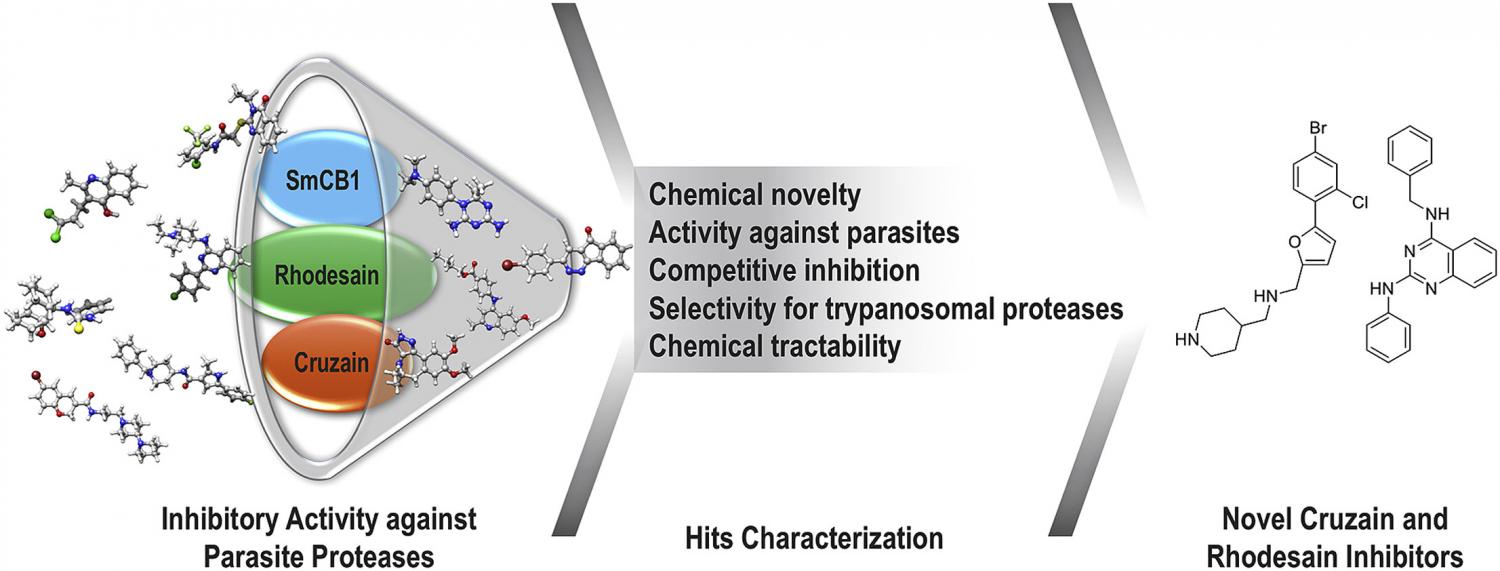
Elsevier, European Journal of Medicinal Chemistry, Volume 179, 1 October 2019
Chagas disease, Human African Trypanosomiasis, and schistosomiasis are neglected parasitic diseases for which new treatments are urgently needed. To identify new chemical leads, we screened the 400 compounds of the Open Access Malaria Box against the cysteine proteases, cruzain (Trypanosoma cruzi), rhodesain (Trypanosoma brucei) and SmCB1 (Schistosoma mansoni), which are therapeutic targets for these diseases. Whereas just three hits were observed for SmCB1, 70 compounds inhibited cruzain or rhodesain by at least 50% at 5 μM. Among those, 15 commercially available compounds were selected for confirmatory assays, given their potency, time-dependent inhibition profile and reported activity against parasites. Additional assays led to the confirmation of four novel classes of cruzain and rhodesain inhibitors, with potency in the low-to mid-micromolar range against enzymes and T. cruzi. Assays against mammalian cathepsins S and B revealed inhibitor selectivity for parasitic proteases. For the two competitive inhibitors identified (compounds 7 and 12), their binding mode was predicted by docking, providing a basis for structure-based optimization efforts. Compound 12 also acted directly against the trypomastigote and the intracellular amastigote forms of T. cruzi at 3 μM. Therefore, through a combination of experimental and computational approaches, we report promising hits for optimization in the development of new trypanocidal drugs.
